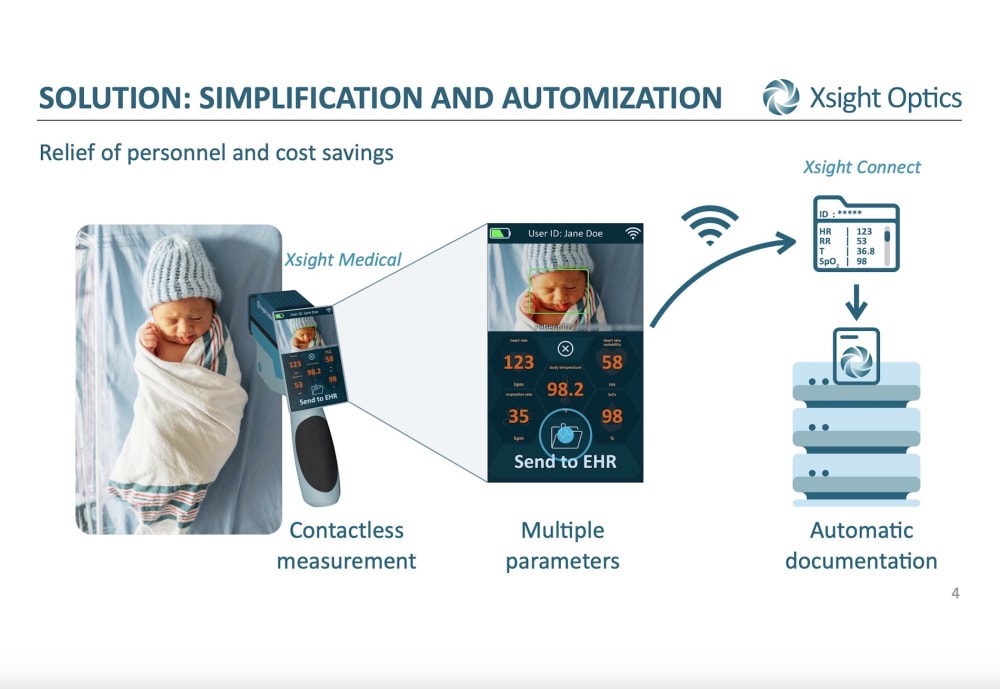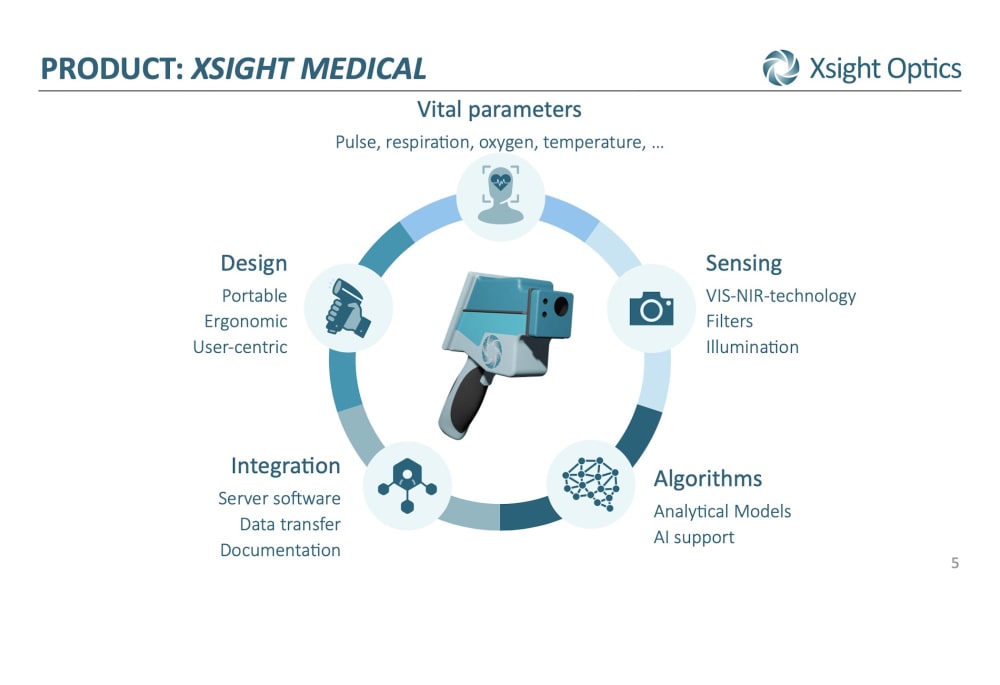
Remote and imaging Photoplethysmographic imaging (rPPG or iPPG) is a major advance in noncontact cardiac monitoring. Using camera technology, rPPG measures blood flow in the superficial layers of the skin by detecting fluctuations in light absorption caused by changes in blood volume. This method is used in medical monitoring, lifestyle products and security technology.
Neuvatek is an advanced technology development and engineering firm, based in Austin Texas. The company is developing Xsight Optics, a photoplethysmography imaging (PPGI) system for non-contact measurement of heart rate and heart rate variability as well as blood pressure, respiration rate, SpO2 and skin temperature in real-life application scenarios and a contactless manner. The focus is on integrating camera technology into the environment so that no body-worn sensors are required. This offers advantages such as increased comfort and the avoidance of problems such as allergic reactions that can be associated with wearing sensors.
Neuvatek' solution is a hand-held, contactless and image-based minimally intrusive technology for measuring physiological data for health monitoring of patients in a medical setting or space-bound crew as well as the detection of deteriorations or prediction of medical conditions in ICUs or during lunar or other space misisons .
This self-contained solution enables the proactive monitoring of key physiological parameters such as heart rate, heart rate variability, respiration rate, temperature, and blood pressure. Future areas of development include, but are not limited to, blood oxygen levels, glucose, electrolytes as well as cortisol .
Besides the medical applications in medical settings, the solution is able to measure data passively, while the space crew could go about their routine activities in a spacecraft or future outpost . The solution is able to measure crew member's health parameters within a spacesuit in an unobtrusive manner .
The system is able to transmit data and actionable information in real-time to allow for real-time monitoring with a compact/light, low power, optimized volume and efficient operation, thus lowering operational burden. The solution's algorithm and embedded software used to process the sensed data will have a small footprint and would be self-contained in the hand-held device .
The physiological data generated by the system is able to interface with 3rd party software directly or via APIs. Neuvatek's solution will be superior to existing systems both from a practical implementation and mobility perspectives. It will also be superior to traditional wearables that contact the skin (i.e. smart watches, garments, etc.) that are less practical and would require a higher amount of maintenance, either in hospitals or space environments .
In a Space-bound environment, the system is self-contained and does not depend on cloud-based services or real-time connective support from Earth. In a health care system and medical organization's environment, the device while still self-contained would be able to connect to the health system's Cloud services and patient's EHR .
-
Awards
-
 2024 Top 100 Entries
2024 Top 100 Entries
Like this entry?
-
About the Entrant
- Name:Pierre Touma
- Type of entry:teamTeam members:
- Pierre Touma
- Elias Bachaalany
- Imad Maalouf
- Patent status:pending






